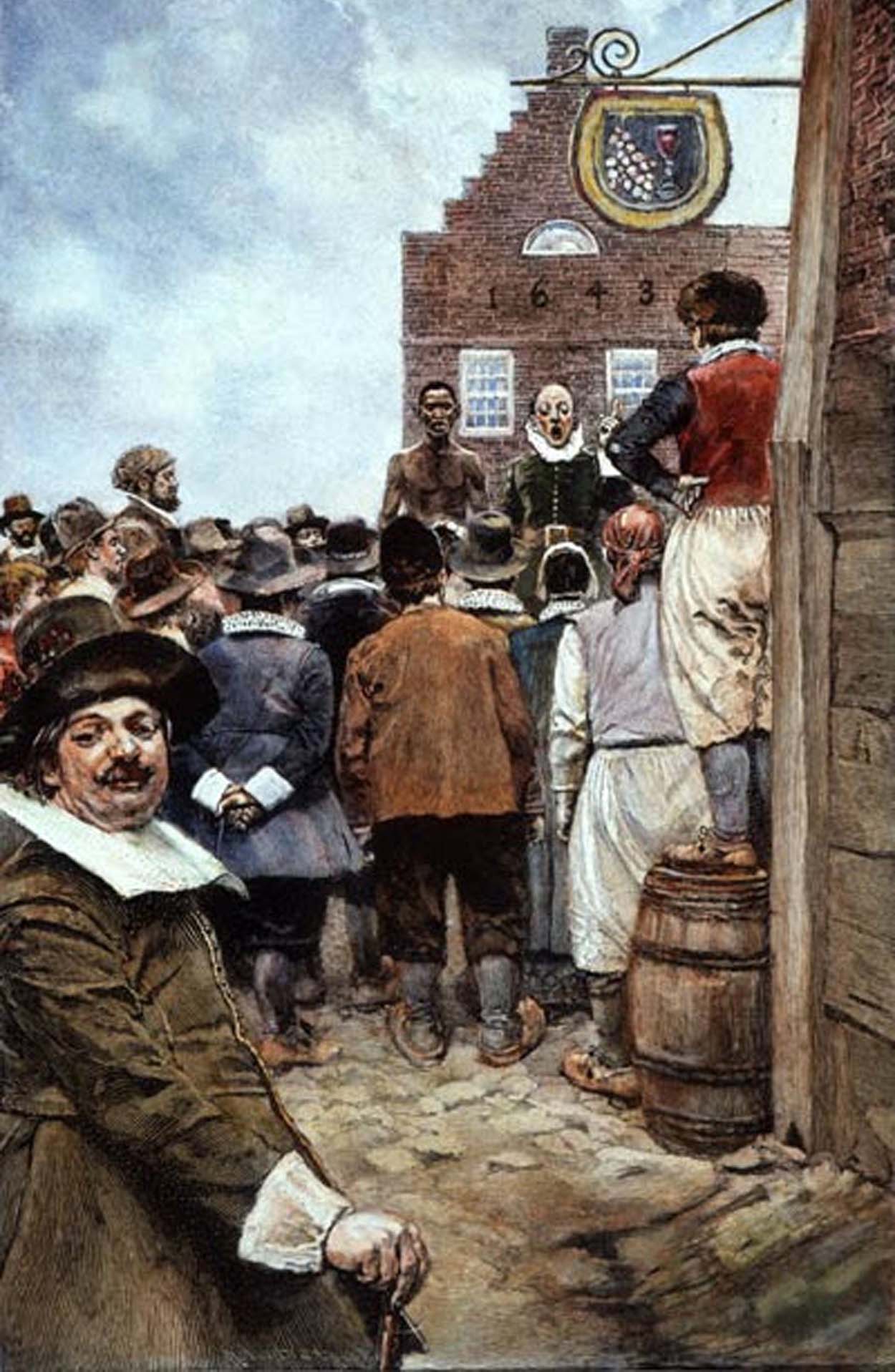
Dutch in America: AD 1624-1664
In 1621 the States General in the Netherlands grant a charter to the Dutch West India Company, giving it a monopoly to trade and found colonies along the entire length of the American coast. The area of the Hudson river, explored by Hudson for the Dutch East India Company in 1609, has already been designated New Netherland. Now, in 1624, a party of thirty families is sent out to establish a colony. They make their first permanent settlement at Albany, calling it Fort Orange.
In 1626 Peter Minuit is appointed governor of the small colony. He purchases the island of Manhattan from Indian chiefs, and builds a fort at its lower end. He names the place New Amsterdam.
NATIVE AMERICAN SLAVE. A Native American captured to be sent into slavery by American colonists, 17th century. Line engraving, American, 19th century.
The Dutch company finds it easier to make money by piracy than by the efforts of colonists (the capture of the Spanish silver fleet off Cuba in 1628 yields vast profits), but the town of New Amsterdam thrives as an exceptionally well placed seaport - even though administered in a harshly authoritarian manner by a succession of Dutch governors.
The only weakness of New Amsterdam is that it is surrounded by English colonies to the north and south of it. This place seems to the English both an anomaly and an extremely desirable possession. Both themes are reflected in the blithe grant by Charles II in 1664 to his brother, the duke of York, of the entire coastline between the Connecticut and Delaware rivers.
New Amsterdam, and in its hinterland New Netherland, lie exactly in the middle of this stretch. When an English fleet arrives in 1664, the Dutch governor Peter Stuyvesant accepts the reality of the situation and surrenders the territory without a shot being fired. Thus New Amsterdam becomes British and two years later, at the end of hostilities between Britain and the Netherlands, is renamed New York. The town has at the time about 1500 inhabitants, with a total population of perhaps 7000 Europeans in the whole region of New Netherland - which now becomes the British colony of New York.
The Dutch have recently begun to settle the coastal regions further south, which the British now also appropriate as falling within the region given by Charles II to the duke of York. It becomes the colony of New Jersey.
(source: www.historyworld.net/wrldhis/PlainTextHistories.asp?historyid=aa80#ixzz1y4A455cn)
No comments:
Post a Comment